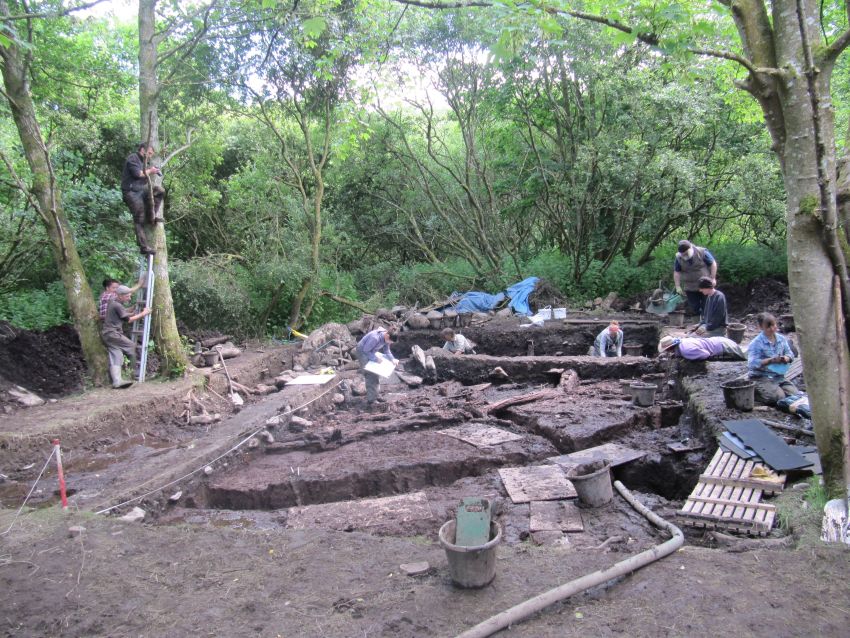A case study from a Scottish wetland village
Published: 8 September 2020
By Dr Nicki Whitehouse and colleagues in Journal of Archaeological Science
New paper published on the first multiproxy spatial study of archaeological structural floor deposits using faecal lipid biomarkers from an archaeological site, using an Iron age round house at Black Loch of Myrton as an example.

A new paper has just been published by Dr Nicki Whitehouse and colleagues in Journal of Archaeological Science entitled “Characterising life in settlement structures using faecal lipid biomarkers: A case study from a Scottish wetland village”.
The paper represents an outcome from the AHRC Funded Celtic Crannogs and Connections project led by Prof Tony Brown (University of Southampton and Tromso University Museum, Norway) and co-lead by Prof Peter Langdon (University of Southampton), Dr Andrew Henderson (University of Newcastle), Dr Anne Crone (AOC group, Scotland), Dr Finbar McCormick (Queen’s University Belfast) and Dr Nicki Whitehouse (University of Glasgow and University Plymouth). The work presents the first multiproxy spatial study of archaeological structural floor deposits to include faecal steroid lipid biomarkers from any archaeological site that we know of.
Roundhouses are ubiquitous features of Iron Age landscapes across North West Europe, yet the way they were used internally is poorly understood. In this paper, spatial analyses of faecal lipid biomarkers advance our understanding of household activities, living conditions and animal management associated with a well-preserved 5thcentury BCE roundhouse from Scotland’s first Iron Age wetland village, Black Loch of Myrton. The work highlights the power of coupling faecal steroid analysis with more traditional multi-proxy archaeological studies of occupation deposits; the approach captures short-lived and/or temporary pulses of dung deposition within the Iron Age roundhouse which can be very difficult to detect using other archaeological proxies.
The on-site presence of animals, particularly in settings where acid soils limit preservation of uncalcified bones for faunal analysis is identified: the analysis of both β-stanols and bile acids facilitates discrimination between faecal sources from ruminants (sheep, goat and cattle), pigs and horses/humans. Supported by faunal assemblage results and entomological dung indicators, it is possible to characterise the on-site presence of animals associated with these archaeological structures. Faecal steroids capture short-lived and/or temporary pulses of dung deposition within the Iron Age roundhouse, which can be very difficult to detect using other archaeological proxies.
The work demonstrates molecular preservation of faecal steroids within deposits that have been subjected to floor cleaning, and trampling, which would otherwise remove macrofossil proxies. Comparisons of multi-proxy faecal signatures of the inner and outer sections of the structure reveal temporal and spatial heterogeneity in roundhouse usage and living conditions. The nature of the faecal signature points to temporary sheltering of animals within the inner section of the structure. The flexibility of use and the division of different activities within the roundhouse provide an important contribution to broader archaeological debates surrounding structures, their functions and re-use.
More broadly, applying faecal lipid biomarkers within structural floor deposits and integrating them alongside more traditional entomological, micromorphological and ecofact analysis to advance understandings of structural use will be of significance to a diverse community of researchers including archaeologists, geochemists, palaeoecologists and soil scientists, and has far-reaching applicability across a diverse range of archaeological settings.
Further details of the work may be found here: https://www.sciencedirect.com/science/article/abs/pii/S0305440320301230
Details of the Celtic Crannogs and Collections project - to appear soon.
First published: 8 September 2020
<< 2020

